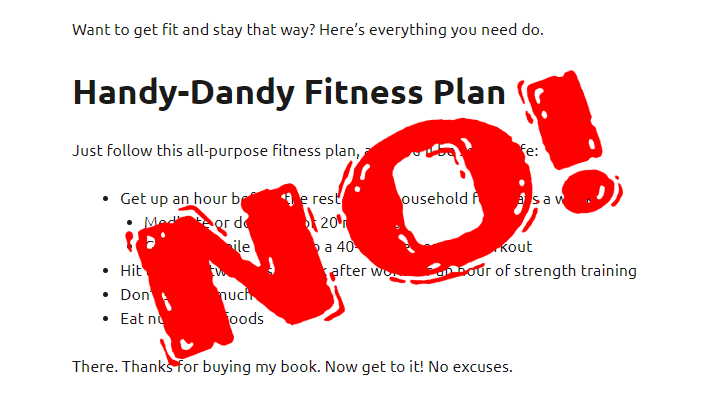“Discipline” Won’t Get You Fit
Want to get fit and stay that way? No problem. Here’s my super-secret program with everything you need do to achieve lifelong health and fitness. Handy-Dandy Fitness Plan Just follow this all-purpose fitness plan, and you’ll be set for life: There. Thanks for buying my book. Now get to it! No excuses. Yeah… That’s Not … Read more

